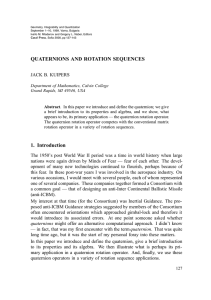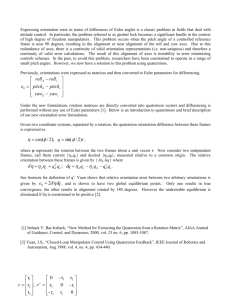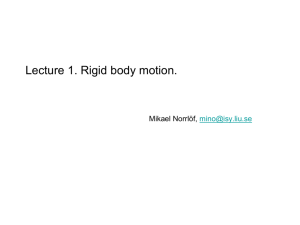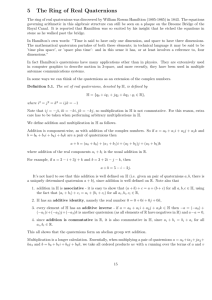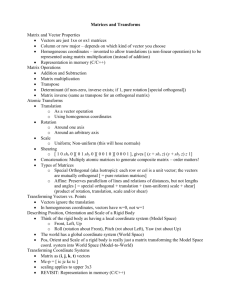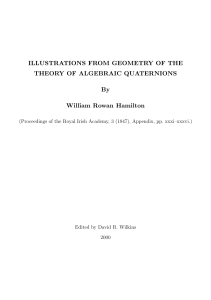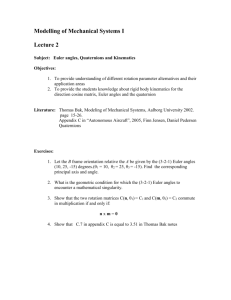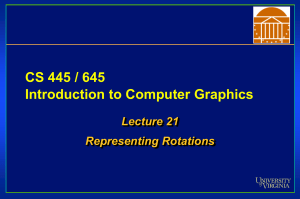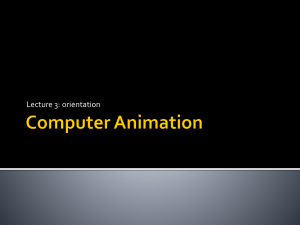reportQuaternions
advertisement
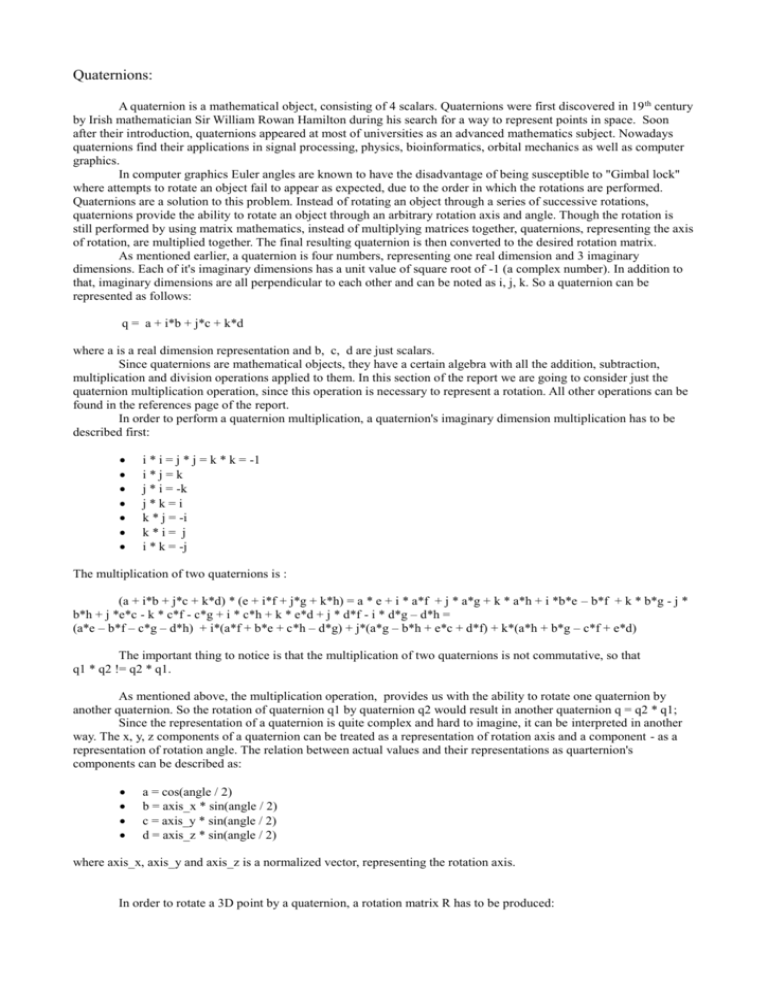
Quaternions: A quaternion is a mathematical object, consisting of 4 scalars. Quaternions were first discovered in 19 th century by Irish mathematician Sir William Rowan Hamilton during his search for a way to represent points in space. Soon after their introduction, quaternions appeared at most of universities as an advanced mathematics subject. Nowadays quaternions find their applications in signal processing, physics, bioinformatics, orbital mechanics as well as computer graphics. In computer graphics Euler angles are known to have the disadvantage of being susceptible to "Gimbal lock" where attempts to rotate an object fail to appear as expected, due to the order in which the rotations are performed. Quaternions are a solution to this problem. Instead of rotating an object through a series of successive rotations, quaternions provide the ability to rotate an object through an arbitrary rotation axis and angle. Though the rotation is still performed by using matrix mathematics, instead of multiplying matrices together, quaternions, representing the axis of rotation, are multiplied together. The final resulting quaternion is then converted to the desired rotation matrix. As mentioned earlier, a quaternion is four numbers, representing one real dimension and 3 imaginary dimensions. Each of it's imaginary dimensions has a unit value of square root of -1 (a complex number). In addition to that, imaginary dimensions are all perpendicular to each other and can be noted as i, j, k. So a quaternion can be represented as follows: q = a + i*b + j*c + k*d where a is a real dimension representation and b, c, d are just scalars. Since quaternions are mathematical objects, they have a certain algebra with all the addition, subtraction, multiplication and division operations applied to them. In this section of the report we are going to consider just the quaternion multiplication operation, since this operation is necessary to represent a rotation. All other operations can be found in the references page of the report. In order to perform a quaternion multiplication, a quaternion's imaginary dimension multiplication has to be described first: i * i = j * j = k * k = -1 i*j=k j * i = -k j*k=i k * j = -i k*i= j i * k = -j The multiplication of two quaternions is : (a + i*b + j*c + k*d) * (e + i*f + j*g + k*h) = a * e + i * a*f + j * a*g + k * a*h + i *b*e – b*f + k * b*g - j * b*h + j *e*c - k * c*f - c*g + i * c*h + k * e*d + j * d*f - i * d*g – d*h = (a*e – b*f – c*g – d*h) + i*(a*f + b*e + c*h – d*g) + j*(a*g – b*h + e*c + d*f) + k*(a*h + b*g – c*f + e*d) The important thing to notice is that the multiplication of two quaternions is not commutative, so that q1 * q2 != q2 * q1. As mentioned above, the multiplication operation, provides us with the ability to rotate one quaternion by another quaternion. So the rotation of quaternion q1 by quaternion q2 would result in another quaternion q = q2 * q1; Since the representation of a quaternion is quite complex and hard to imagine, it can be interpreted in another way. The x, y, z components of a quaternion can be treated as a representation of rotation axis and a component - as a representation of rotation angle. The relation between actual values and their representations as quarternion's components can be described as: a = cos(angle / 2) b = axis_x * sin(angle / 2) c = axis_y * sin(angle / 2) d = axis_z * sin(angle / 2) where axis_x, axis_y and axis_z is a normalized vector, representing the rotation axis. In order to rotate a 3D point by a quaternion, a rotation matrix R has to be produced: R= a^2–b^2–c^2–d^2 2*b*c+2*a*d 2*b*d-2*a*c 0 2*b*c–2*a*d a^2-b^2+c^2-d^2 2*c*d-2*a*b 0 2*b*d+2*a*c 2*c*d-2*a*b a^2-b^2c^2+d^2 0 0 0 0 1 Instead of calculating the direct rotation matrix, another approach is to calculate back the rotation vector and Eulerian angle from their quaternion representation. The angle can be calculated as: angle = arccos(a) * 2 The vector can be calculated as: sin_a = sqrt(1 – a * a); vector_x = b / sin_a vector_y = c / sin_a vector_z = d / sin_a
